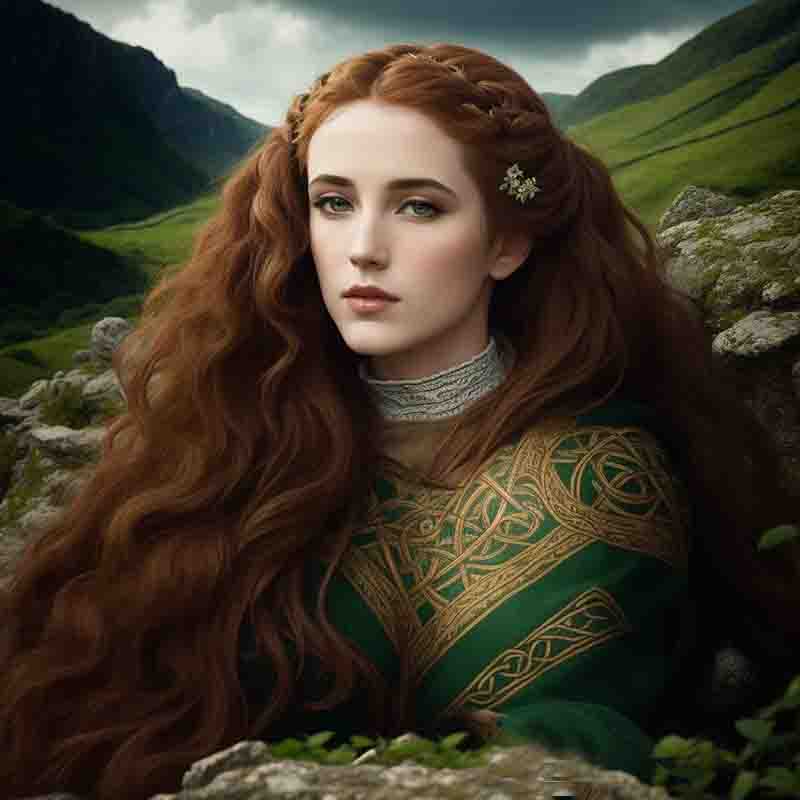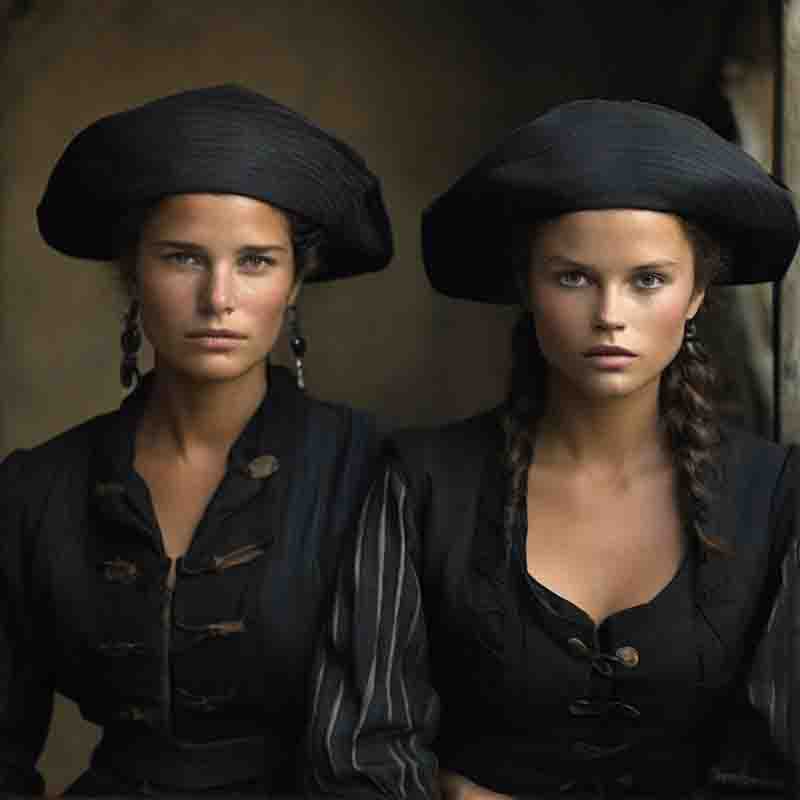Celtic Culture: Where Legends come to Life
The Celts: A Heritage to Embrace
The story of Celtic culture begins with the Celtic people, whose origins can be traced back to ancient times.
These Indo-European tribes were skilled artisans, traders, and warriors, spreading their influence across Europe.
The Celts left their indelible mark on the world, with distinct regional variations emerging over time.
Discover the rich Celtic cultural treasure
The term "Celtic" represents a broad and diverse cultural spectrum that spans history, language, mythology, art, festivals, and contemporary influence.
It is a testament to the lasting power of cultural heritage and its ability to shape the past, the present and the future.
In the context of linguistics and cultural identity, the term "Celtic" pertains to the languages, traditions, and customs associated with the Celtic peoples, who historically inhabited regions such as Ireland, Scotland, Wales, Cornwall, and Brittany.
As we explore into the enigmatic and diverse world of Celtic culture, we discover a heritage that continues to inspire, captivate and connect people.
The roots and essence of Celtic culture have made a lasting impact on the world.
| Time Period | Key Developments | |
|---|---|---|
| Prehistoric Origins (c. 1200 BCE - 500 BCE) | Emergence of Celtic culture in Central Europe. Hallstatt and La Tène cultures mark early phases. | |
| Celtic Expansion (c. 500 BCE - 1 CE) | Celts spread across Europe and into the British Isles. Flourishing of distinctive Celtic artistic style. | |
| Roman Conquest (1 CE - 5th Century CE) | Roman conquest of Celtic territories and assimilation. Survival of Celtic languages and cultures in remote areas. | |
| Medieval Period (5th - 15th Century) | Celtic culture persists and evolves in less Roman-influenced regions. Christianization of Celtic lands. | |
| Celtic Revival (18th - 19th Century) | Rekindling of interest in Celtic folklore and traditions. Scholars and collectors study Celtic myths and legends. | |
| Celtic Languages and Literature (Late 19th - Early 20th Century) | Revival of Celtic languages and literature. Promotion of Irish culture by figures like W.B. Yeats. | |
| Independence Movements (20th Century) | Irish independence in 1922, promoting Celtic culture. Resurgence of cultural identity in Scotland, Wales, and Brittany. | |
| Celtic Music and Dance (20th Century - Present) | Rise in popularity of Celtic music and artists like The Chieftains. International recognition of Celtic dance forms, such as Riverdance. | |
| Celtic Festivals and Tourism (Late 20th Century - Present) | Celtic festivals celebrate arts and culture, e.g., Edinburgh Festival. Celtic regions become popular tourist destinations, preserving cultural heritage. | |
| Contemporary Celtic Identity (21st Century - Present) | Celtic culture continues to be a source of pride and identity for many. Ongoing efforts to preserve and promote Celtic languages and traditions. |
Origins of Celtic Culture: A Journey through Time
The story of Celtic culture begins with the Celtic people, whose origins can be traced back to ancient times.
These Indo-European tribes were skilled artisans, traders, and warriors, spreading their influence across Europe.
The Celts left their indelible mark on the British Isles, with distinct regional variations emerging over time. The Celtic cultural map includes:
-
Ireland: Known for its lush landscapes and spirited traditions, Ireland has long been associated with Celtic culture. The Celtic influence in Ireland is most evident during St. Patrick's Day celebrations, where the vibrant green hues of the land mirror the deep-rooted Celtic connection to nature.
-
Scotland: Scotland, famous for kilts, bagpipes, and Highland games, is another Celtic stronghold. The sound of bagpipes resonates with the spirit of the Celts, echoing through the misty Highlands. Here, Celtic culture is deeply entwined with the national identity, especially in regions like the Western Isles and the Highlands.
-
Wales: In Wales, the Welsh language, or Cymraeg, stands as an essential part of cultural identity. Eisteddfods, Welsh cultural festivals, celebrate the language and its artistic expressions. Wales' rolling hills and rugged coasts are imbued with the ancient spirit of Celtic culture.
-
Brittany: Located in France, Brittany is a Breton stronghold, where Celtic culture is kept alive through festivals, music, and traditional Breton dress. The distinct Breton language, Brezhoneg, adds to the region's Celtic charm.
-
Cornwall and Isle of Man: Cornwall and the Isle of Man, though smaller in size, have retained their Celtic identities. Cornwall's rugged cliffs and the Isle of Man's coastal beauty are testament to the enduring spirit of the Celts in these regions.
Celtic Languages: A Linguistic Environment
Celtic languages, including Irish, Scottish Gaelic, and Welsh, are integral to Celtic culture.
They represent linguistic traditions that have been preserved, celebrated, and even revived.
-
Irish Gaelic (Gaeilge): In Ireland, the Irish language, or Gaeilge, remains a significant part of the country's cultural identity. It is spoken in the Gaeltacht regions, where efforts are made to ensure its continued use. Irish Gaelic is more than just a language; it's a connection to the heart of Celtic traditions.
-
Scottish Gaelic: In Scotland, Scottish Gaelic is making a resurgence. Gaelic-medium education programs and Gaelic radio stations contribute to its revival. The language, often seen as the voice of the Highlands and the Western Isles, is an integral part of Scotland's rich heritage.
-
Welsh (Cymraeg): The Welsh language, or Cymraeg, is an essential component of national identity in Wales. With thriving Welsh-language media and educational programs, the language is kept alive and well. It's a symbol of Welsh cultural pride and heritage.
Celtic Art and Symbols: A Visual Legacy
Celtic art is renowned for its intricate designs, characterized by knots, spirals, crosses, and other motifs.
These symbols are not merely decorative but hold profound cultural significance.
-
Celtic Knotwork: Perhaps the most iconic of Celtic art forms, knotwork represents the eternal cycle of life, death, and rebirth. The unbroken loops of Celtic knots symbolize the interconnectedness of all things. These intricate patterns are often found in jewelry, manuscripts, and even tattoos.
-
Spirals: Spirals in Celtic art are associated with spiritual growth and enlightenment. They represent the journey of life, constantly evolving and expanding. The simplicity and elegance of spirals have made them enduring symbols of Celtic culture.
-
Crosses: Celtic crosses have both religious and cultural connotations. They are often associated with Celtic Christianity and the intertwining of Pagan and Christian beliefs. These crosses are found in ancient stone carvings, marking sacred places and gravestones.
Celtic culture is a valuable object of study, offering insights into the complex mosaic of history, beliefs, and expressions of a people that evolved over centuries.
Understanding Celtic culture allows us to explore the linguistic and cultural diversity that has shaped the identity of these regions and their influence on the broader world.
Celtic Culture: FAQ
Are you curious about music, art, technology, fashion, lifestyle, and beer?
If so, then you need to subscribe to the free Likewolf newsletter.
100% privacy. When you sign up, we'll keep you posted.
Raise a Glass to Knowledge
Guinness: It's More Than a Drink, It's a Story












